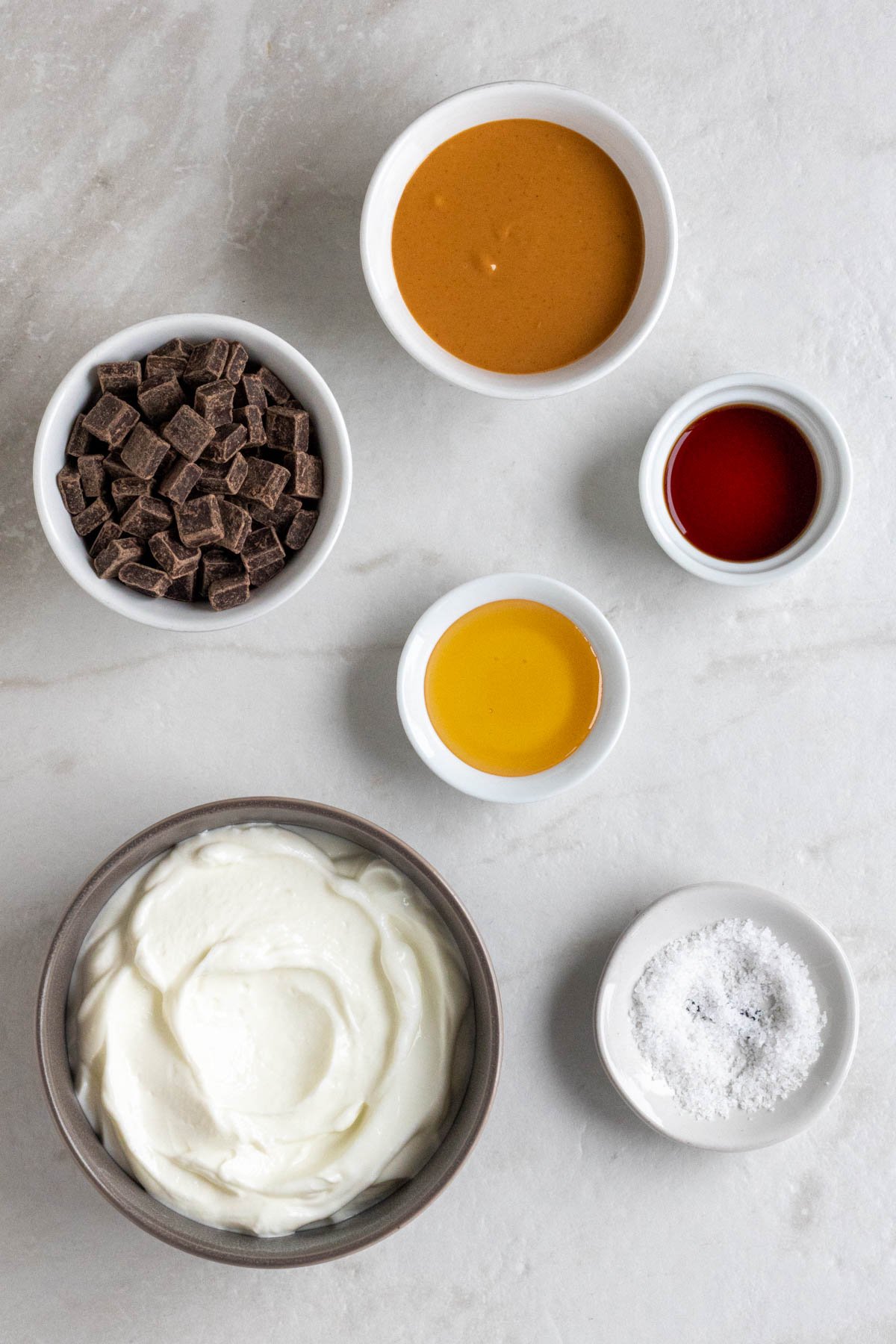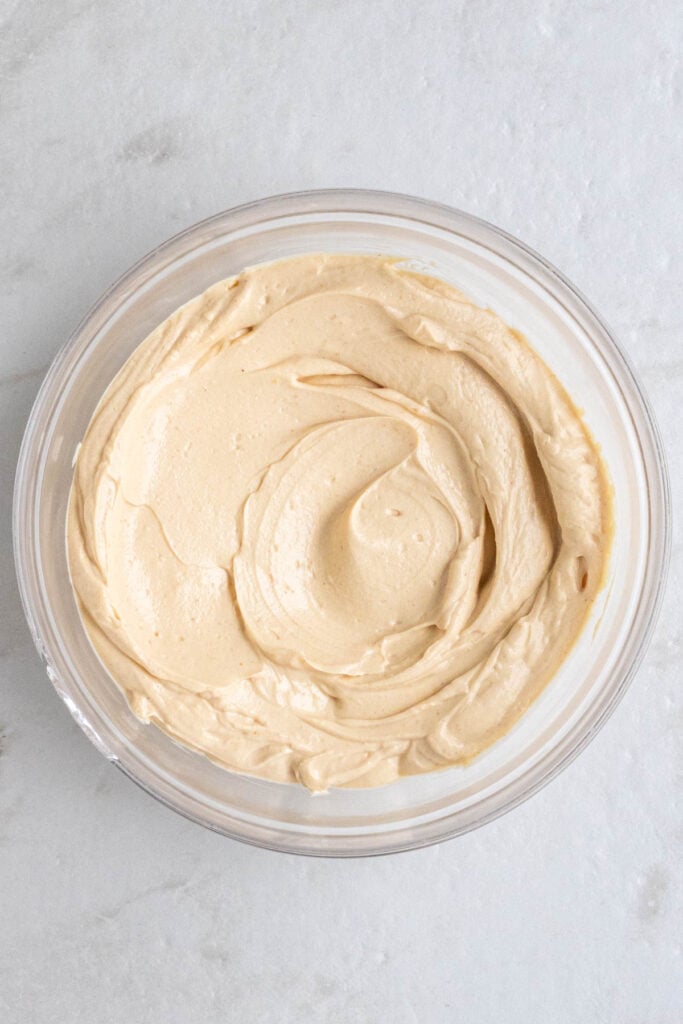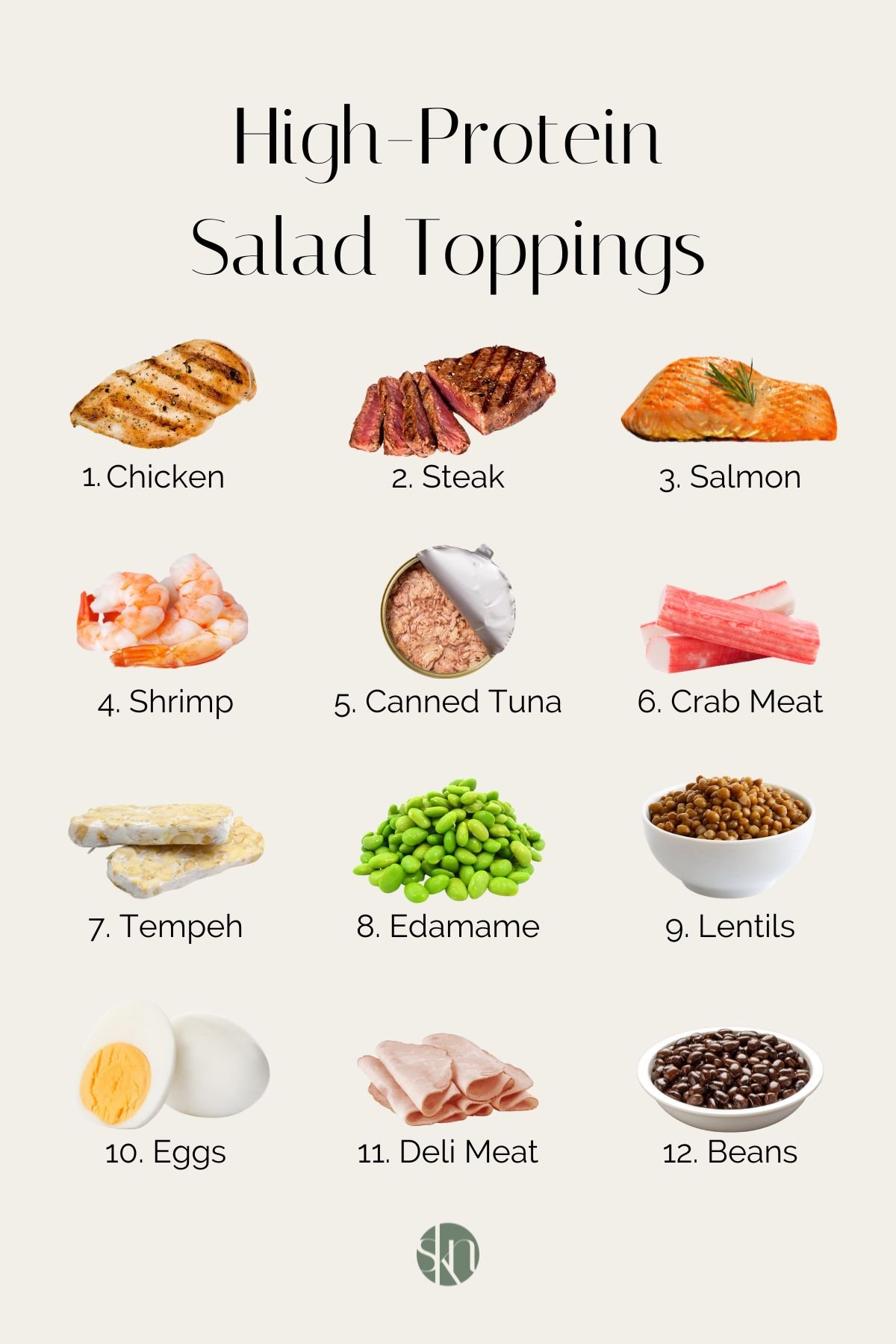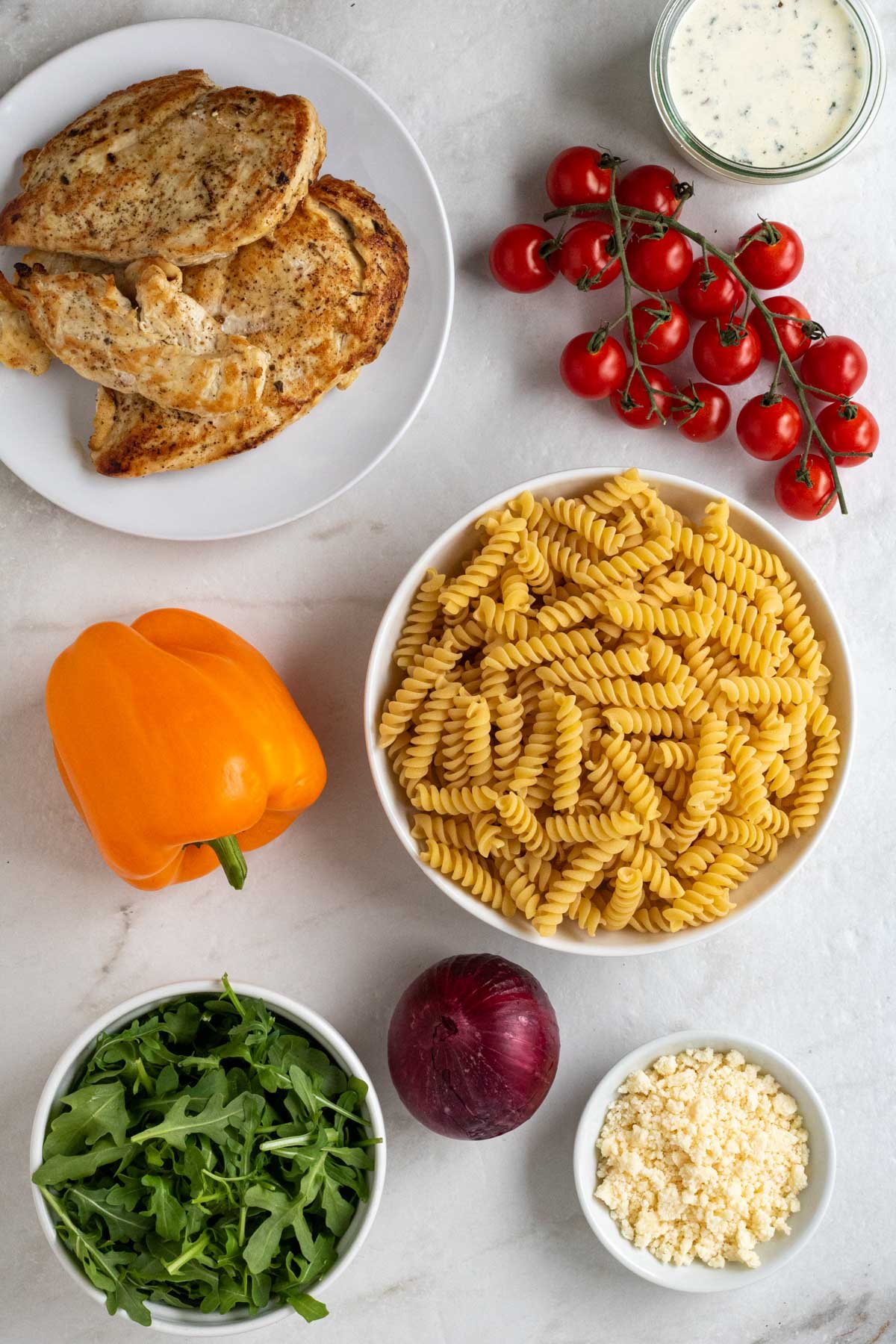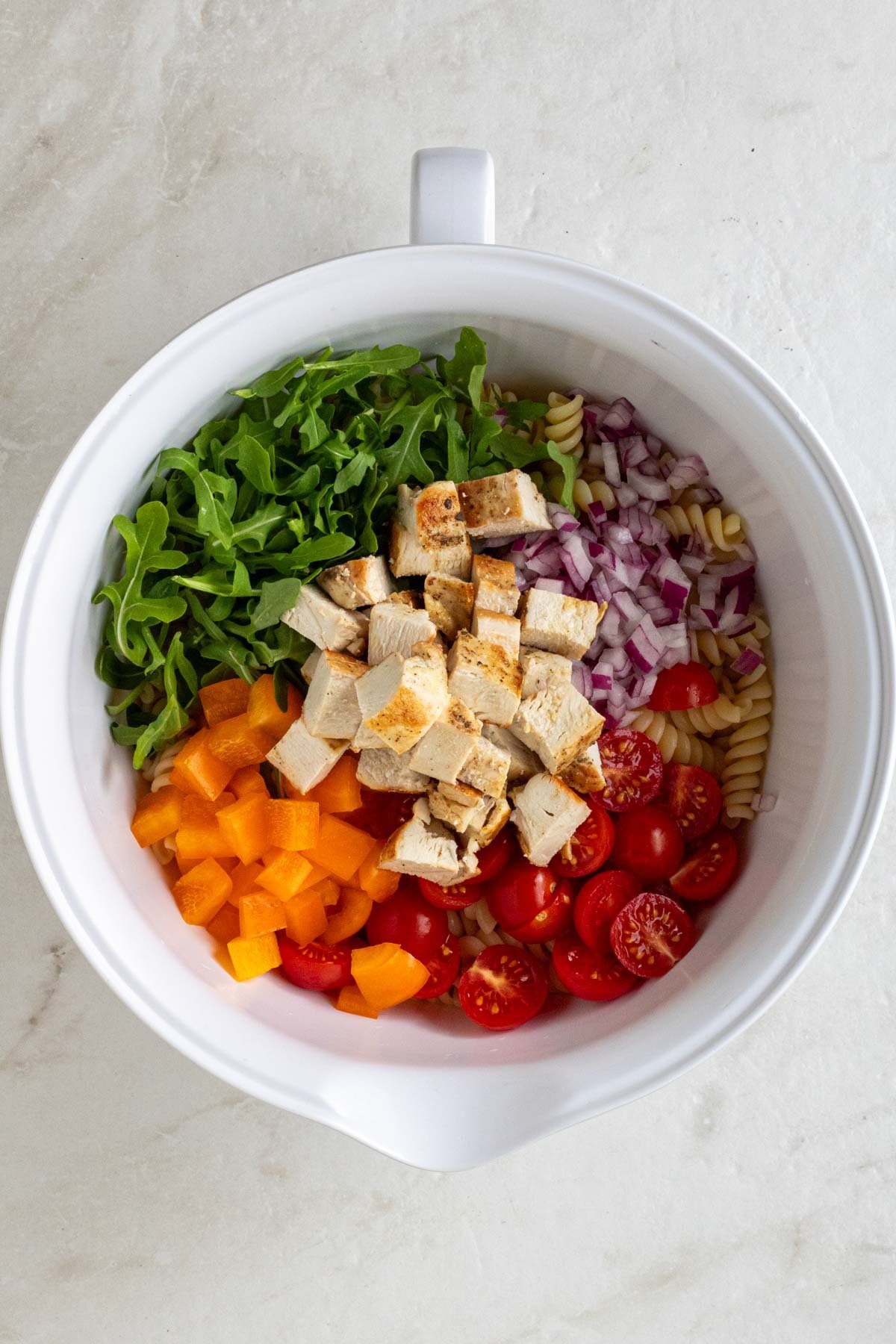Turn a pulled pork sandwich inside out with these slow-cooker pulled pork bowls. Whether you need to serve a crowd, get a weeknight meal on the table, or do a little meal prep, this recipe is a nutritious and delicious dinner idea.

BBQ pulled pork is a southern American classic and a great way to turn a hearty pork shoulder into moist, tender, and flavorful meat. While most recipes use pre-made BBQ sauce, I opted to make a quick homemade barbecue sauce that balances sweet and salty with less added sugar and salt.
These pulled pork bowls are a crowd-pleasing dish that works well for a picnic or gathering where you need to serve a lot of people with minimal effort.
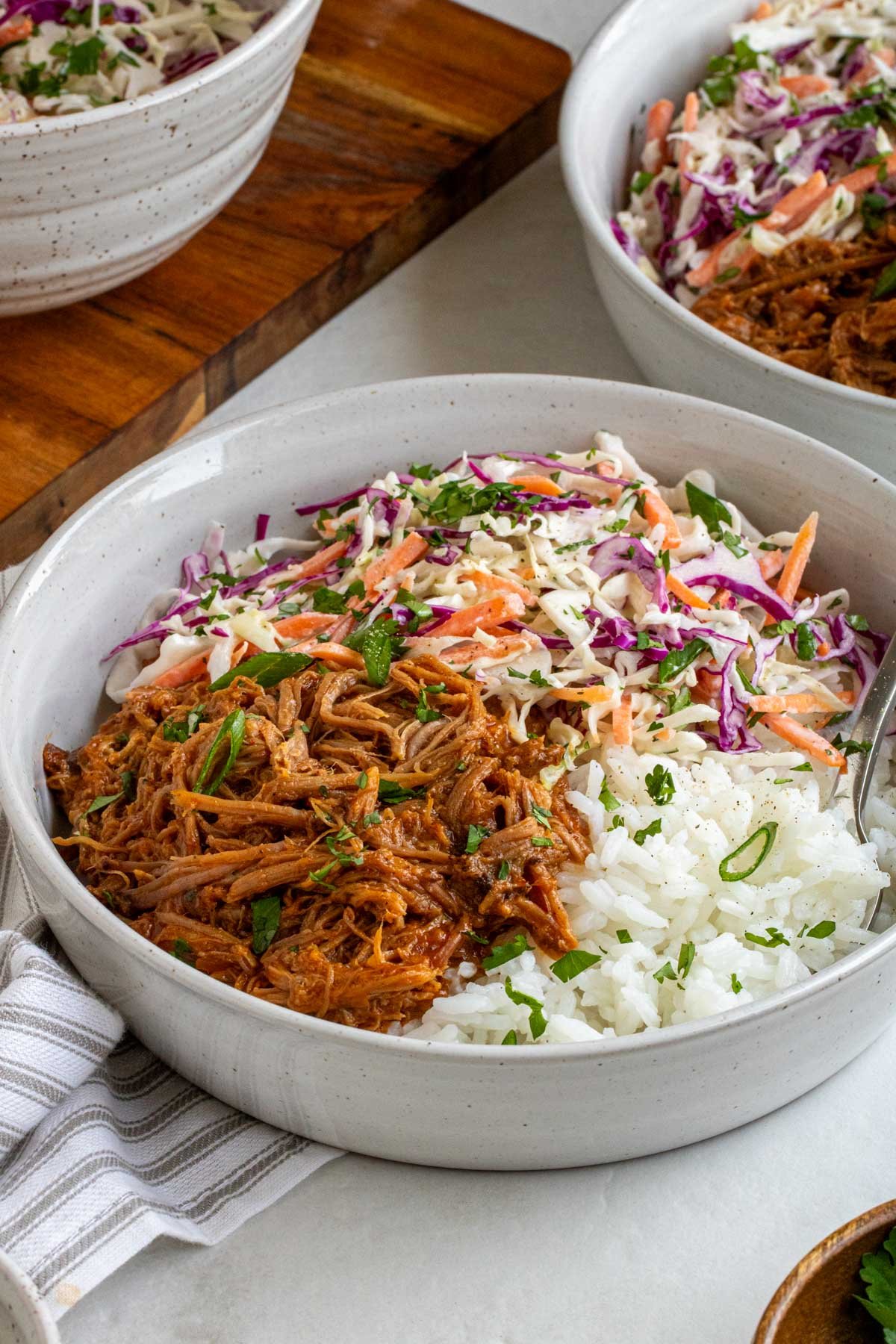
Why You’ll Love It
- Easy to Make – Made in a crockpot, these BBQ pulled pork bowls make dinner prep simple.
- High in Protein – With over 50 grams of protein per serving, these bowls are incredibly filling.
- Keep Well – Once cooked, the pulled pork keeps well in the fridge for days and the freezer for months, making it a great meal prep idea.
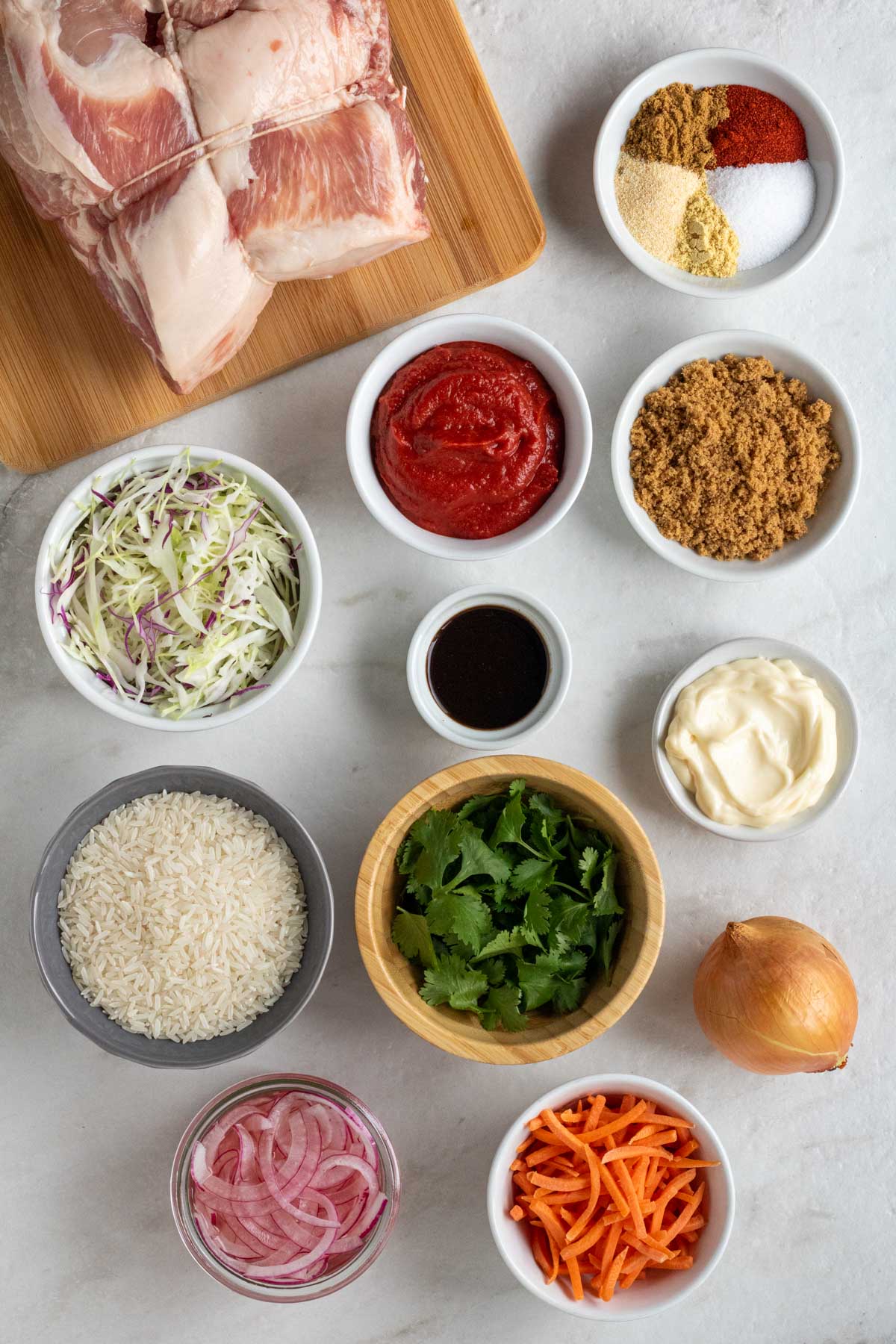
Ingredients + Substitutions
- Pork Shoulder – To make the pulled pork, add some protein, and healthy fats. The recipe calls for a boneless pork shoulder, also known as pork butt or a Boston butt, but you can use a bone-in pork if preferred. See the notes section of the recipe card for details.
- Rice – To make the bowls and add some complex carbohydrates. The recipe calls for white rice, but brown rice will also work. See the notes section of the recipe card for details.
- Tomato Paste – To make the homemade BBQ sauce. The recipe calls for tomato paste, but ketchup will also work.
- Apple Cider Vinegar – To add some acidity to the sauce, lime juice will also work.
- Brown Sugar – To sweeten the BBQ sauce, maple syrup will also work.
- Spices – A mixture of smoked paprika, ground cumin, and mustard powder to flavor the pork.
- Onion – To flavor the pulled pork. You can use onion powder if preferred; see the notes section of the recipe cards for details.
- Cabbage and Carrots – To make the coleslaw and add some veggies. You can also you a pre-made coleslaw mix if preferred.
- Cilantro – To add some brightness and flavor to the bowls.
- Green Onion – To serve, although optional.
- Salt and Pepper – To season.

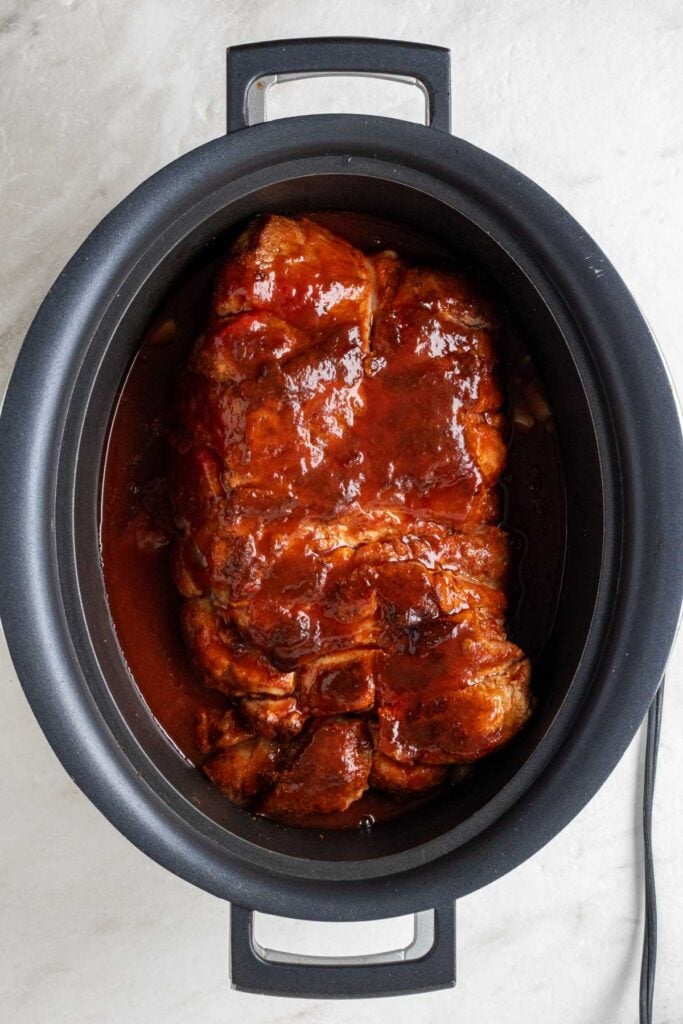
Dietary Adaptions
To Make Them Gluten-Free: Use gluten-free Worcestershire sauce or omit it completely.
To Make Them Dairy-Free: No adaptations are needed; this recipe is dairy-free.
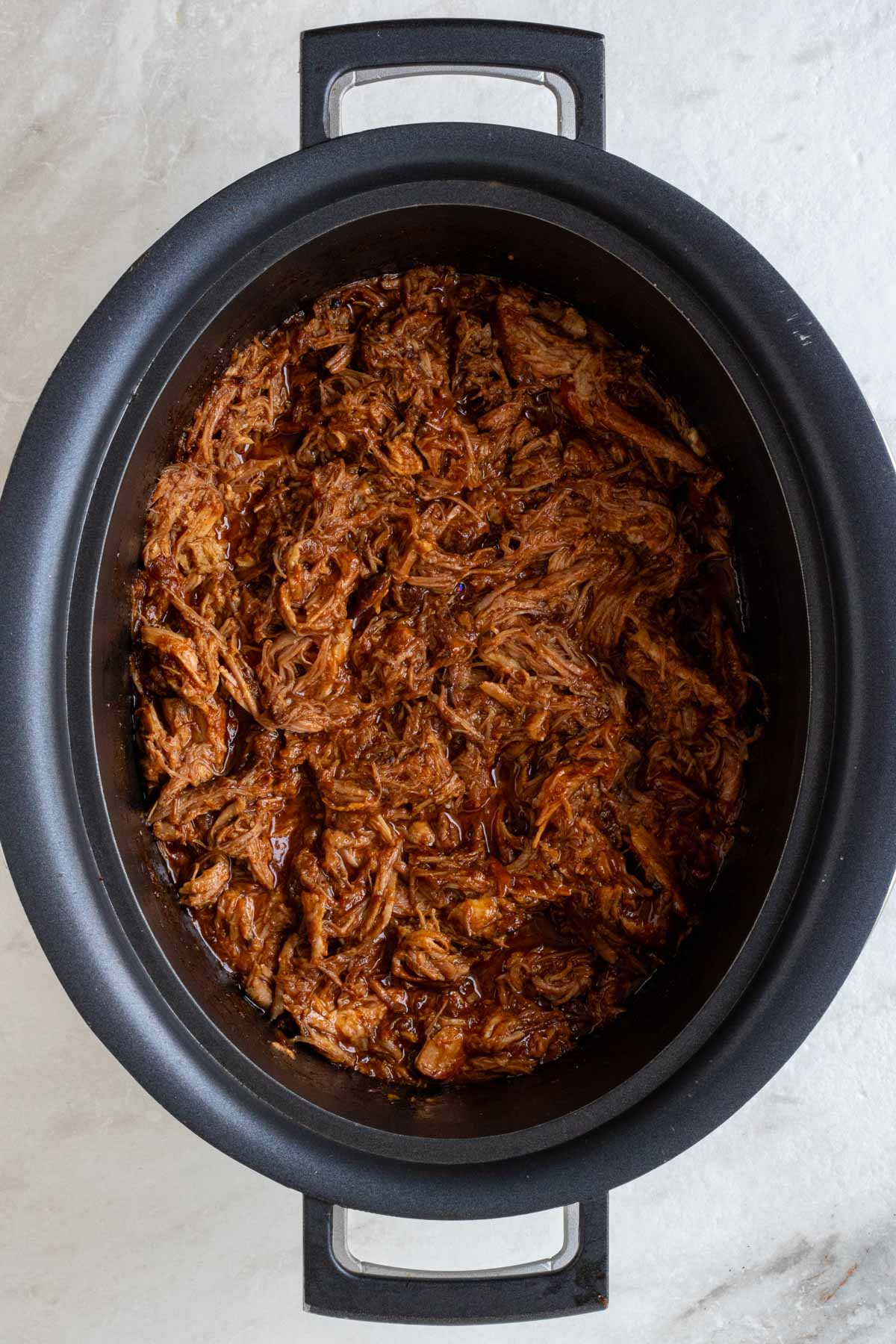
Red’s Nutrition Tip
While the inclusion of refined sugar in this recipe may be worrisome to some, it is not cause for concern. Not only is the 1/2 cup of brown sugar spread across the entire recipe, resulting in just over 1/2 tablespoon per serving, but in the context of an otherwise healthy diet, added sugar can be consumed without concern.
Serving Suggestions
These pulled pork bowls are a balanced meal with protein, carbohydrates, fiber, and fats; however, they can easily be adapted to suit your personal calorie or macro needs. For example:
- To make them lower in fat, trim all excess fat from the pork shoulder or use pork tenderloin instead, and swap the mayonnaise for non-fat Greek yogurt.
- To make it low-carb, swap the white rice for cauliflower rice.
- To make it higher in fiber, swap the white rice for brown rice and add more high-fiber foods such as black beans, avocado, or sweet corn.
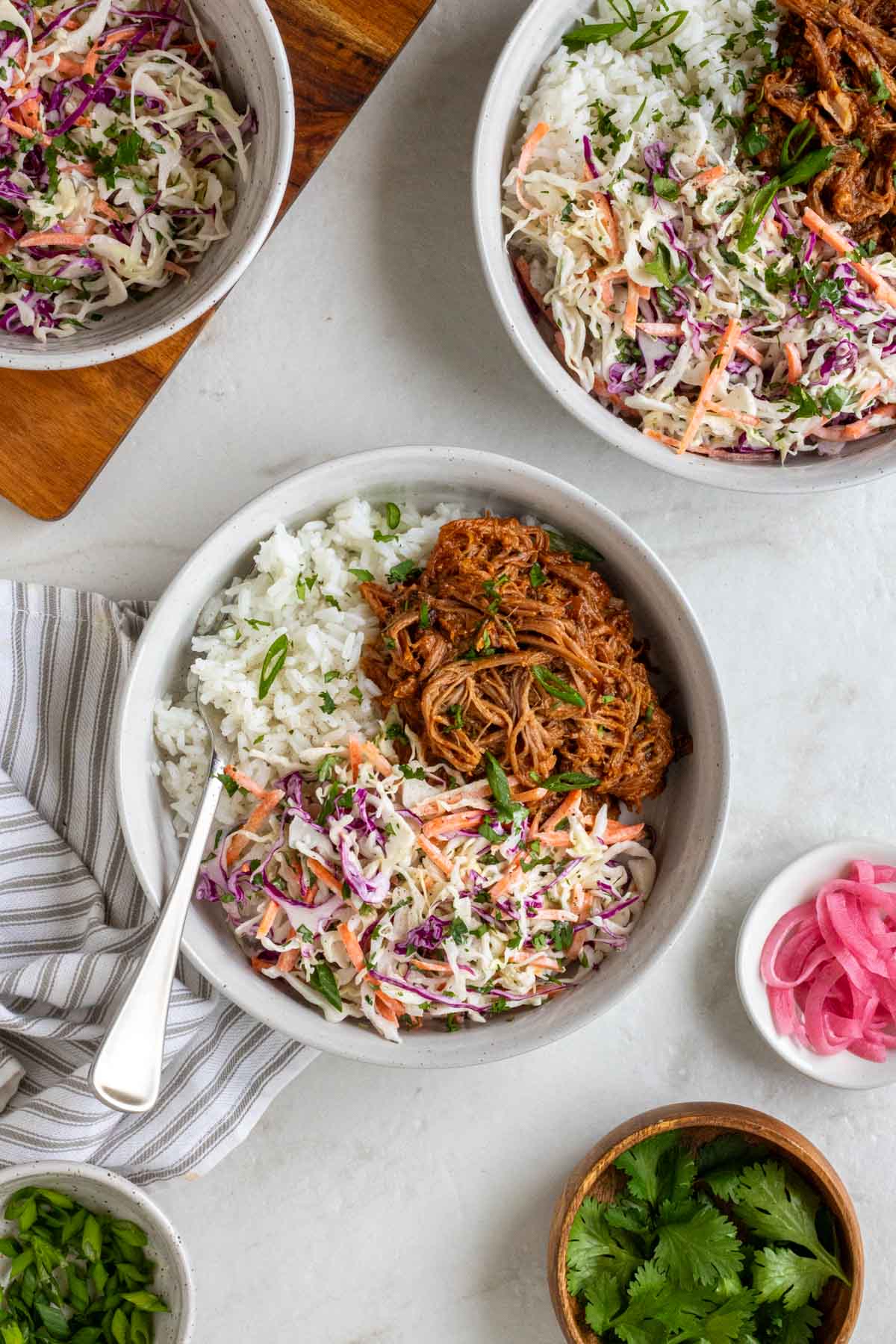
Storage + Reheating
To Refrigerate: Once cooled, any leftover pulled pork and rice can be stored assembled or in separate airtight containers in the fridge for up to 4 days. The coleslaw can be stored in a separate airtight container for up to 3 days.
To Freeze: Once cooled, the pulled pork and rice can be stored assembled or in separate airtight containers in the freezer for up to 3 months. The coleslaw and dressing cannot be frozen.
To Reheat: Once thawed, the pulled pork and rice can be reheated in the microwave for 2-3 minutes or until warm. The coleslaw can be added to the bowls once reheated.





